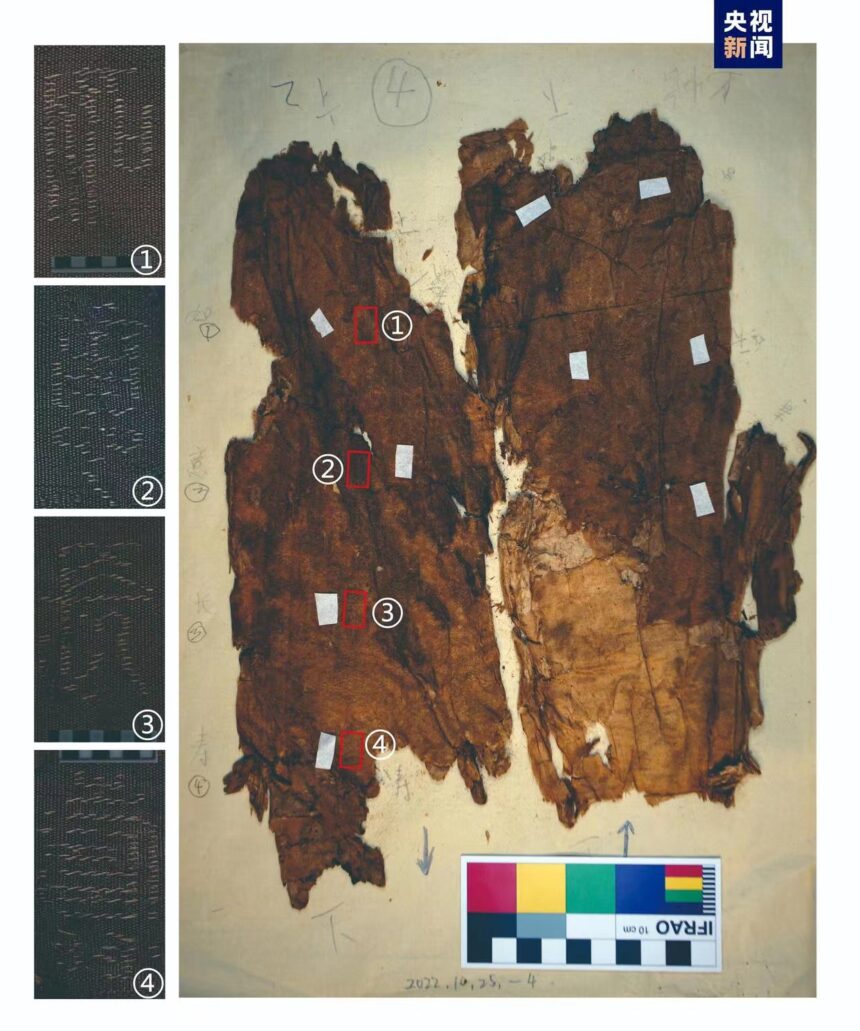The comprehensive inventory of Mawangdui Tombs artifacts, including the renowned mummified remains of Lady Xin Zhui, has finally been completed after decades of meticulous efforts. The collection encompasses 26,937 items, categorized into three primary groups: lacquerware, textiles, and bamboo and silk manuscripts, according to a report by state broadcaster CCTV on Tuesday, citing the Hunan Museum.
Located in Changsha, Hunan Province, the Mawangdui site is the burial place of the Marquis of Dai from the Han Dynasty period (202 BC-220 AD), along with his wife and son. The site gained international fame in the 1970s when researchers opened a coffin and discovered a remarkably well-preserved female corpse, later identified as Lady Xin Zhui, the wife of the Marquis of Dai.
Lacquerware, Textiles, and Manuscripts
The inventory includes 1,017 pieces of lacquerware, with 869 being exceptionally well-preserved. The textile collection, predominantly silk, totals 24,490 items, 212 of which remain intact, with the rest consisting of fabric fragments. Additionally, 1,430 bamboo and silk manuscripts have been identified, including silk books, paintings, wooden tablets, and bamboo slips.
Archaeological Milestone
The archaeological excavation of the Mawangdui Han Tombs occurred from 1972 to 1974. This is a major 20th-century discovery. Initial reports listed over 3,000 artifacts. Many items, especially from Tombs 2 and 3, were unaccounted for.
Yu Yanjiao, director of the Mawangdui Tombs research and exhibition center at the Hunan Museum, explained that the earlier reports were incomplete due to ongoing excavations when the first report was published in 1973. While the 2004 report provided better documentation, significant gaps remained. The recent comprehensive inventory process, coupled with advanced research techniques, has addressed these gaps, resulting in a more accurate and detailed tally.
Advancements in Research
The significant increase from “over 3,000” to 26,937 Mawangdui Tombs artifacts underscores advancements in research methodologies and archaeological technology. For example, during the recent reorganization, researchers identified crucial artifacts like remnants of silk fabric woven with auspicious symbols for the first time, thanks to new technology.
Duan Xiaoming leads the Hunan Museum. He said most Mawangdui artifacts are cataloged. Only some ceramic coins and bamboo pieces remain. This thorough documentation lays a solid foundation for further research, preservation, and the utilization of these cultural relics.
Future Research and Symposium
The Hunan Museum plans a Mawangdui Tombs research data center. The goal is to digitize the entire collection. On August 18, the museum will hold a symposium. This marks the 50th excavation anniversary. The symposium will reveal new research findings.

